Sony AF8 TV review: ignore the haters, the KD65AF8 is the best 4K HDR OLED TV of the year so far
No it's not a huge leap forward from Sony's A1 from last year. Yes it's the best TV you can buy

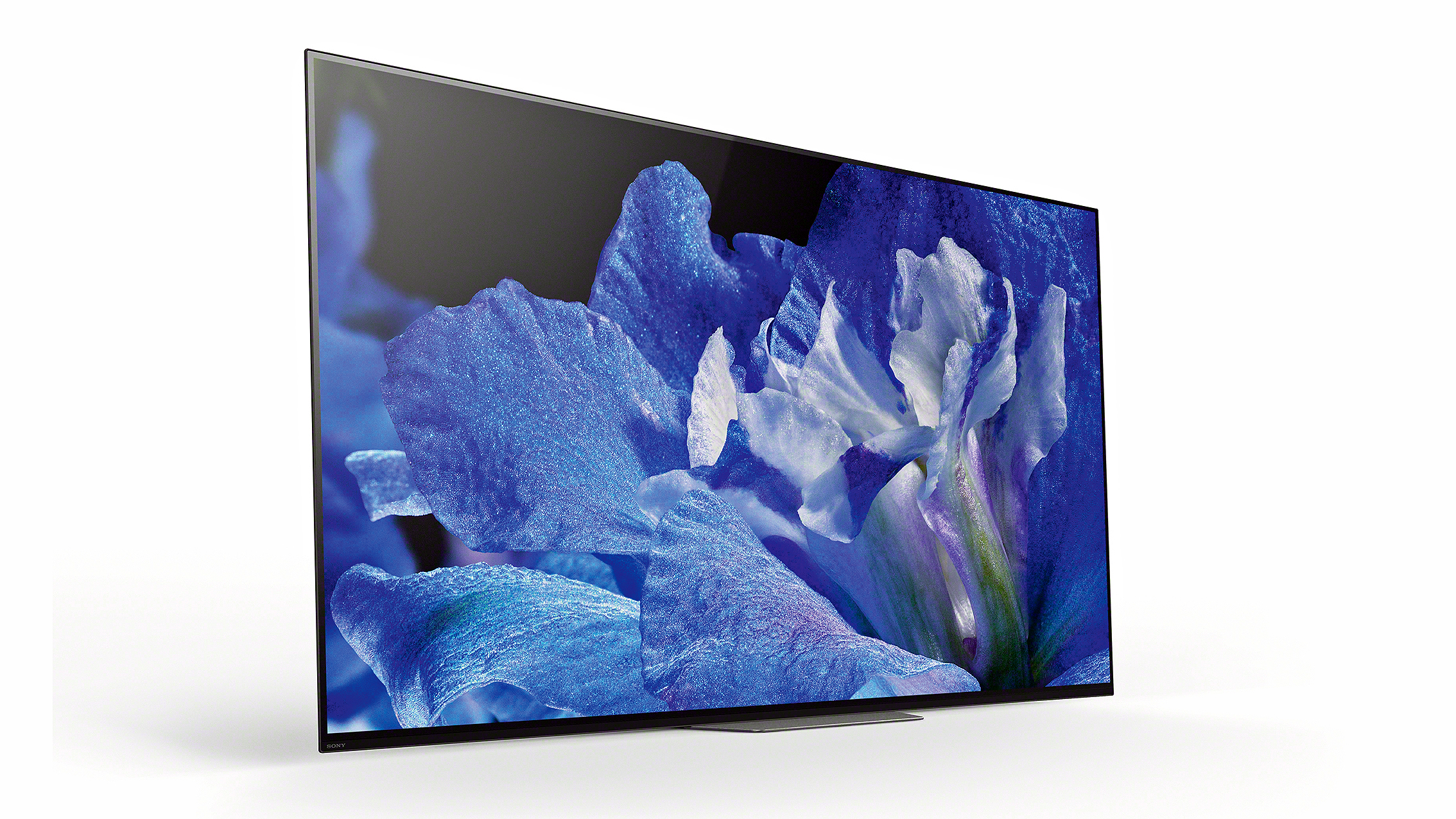
The Sony AF8 is a 4K OLED TV that oozes class. The form factor is less revolutionary but frankly easier to get on with than last year's Sony A1, and the visuals and sound shine just as bright. Ultimately, welcome Sony’s AF8 into your home and it will wow you with its jaw-dropping picture and superb sonic performance.
-
+
Genuinely jaw-dropping 4K HDR OLED picture quality
-
+
Remarkable in-screen audio system
-
+
Excellent build and fine finishing
-
-
Okay, it isn't a huge leap on from last year's A1
-
-
…But then it is hard to improve on The Best
Why you can trust T3
Some reviews of the AF8 have expressed disappointment that it's not a huge leap forward from last year's Sony A1 OLED TV, with some even suggesting it's a worse TV. Here at T3 we poo-poo that suggestion.
We rated the A1 the best telly of 2017 and gave it a T3 Award accordingly. The AF8 uses the same panel as the A1 and performs to the exact same high standard, but design and tech tweaks make it an even better telly, with a much more affordable launch price than the A1 had.
There are two caveats to this. Firstly that the A1 is still on sale, costs about the same as the AF8, and may well soon become easy to find at cheaper prices. This raises a bit of a dilemma as to which to buy.
• Which is best? Sony AF8 vs LG C8
The other is that LG has its flagship TVs on shelves – we've got a review of the OLED C8 with more to come. Samsung and Panasonic are also now unfurling their UHD weapons. Since the AF8 is not a huge leap on from the A1 this gives the other brands a great opportunity to chase and take over. However, it's unlikely that any of them will be making a quantum leap in 2018, especially when it comes to OLED as they all share the same basic panels.
So for now, the Sony AF8 is the best 4K UHD TV you can buy. End of.
So, that's the verdict spoiled, early doors. On with the review.
- Best TV 2018 – purest televisual porn, with more £2K+ TVs
- The best TV under £1000 - more pocket-friendly options
- Best television under £500 - well, whatever you want, friend
Sony AF8 (KD65AF8) review: design
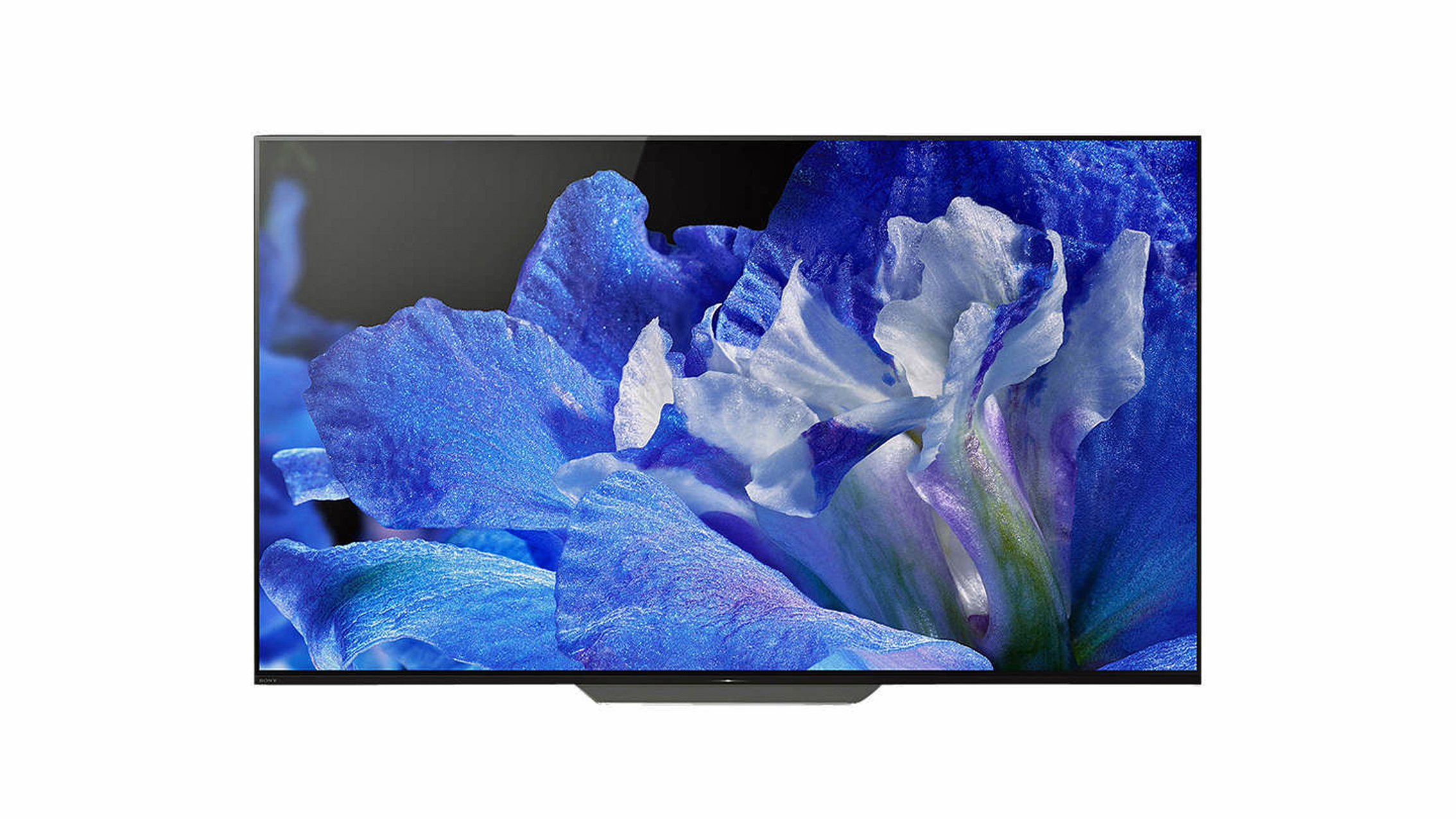
Available in 55-inch and 65-inch screen sizes (I tested the big fella), the AF8 sports a classic design aesthetic, unlike the Sony A1 which had a unique 'lean back' look that made it a little tricky to pair with AV furniture.
It’s also slimmer, with a smaller physical footprint. This more conventional appearance makes it much easier to accommodate on typical stands and units.
Sony describes the overall design as ‘soft minimalism’. Everything is underplayed, including the Sony branding, which is subtle to the point of invisibility (hint: it’s bottom left).
The Acoustic Surface speaker tech, which we'll come to shortly, frees up Sony's designers to do something different with the panel itself, sitting it on a substantial central foot. The screen, which is edge-to-edge glass, sits virtually flush to its pedestal, with barely an air gap between picture and stand.
The Sony AF8 range
This review is specifically about the 65-inch Sony KD65AF8. The Sony KD55AF8 is functionally and aesthetically identical, but smaller at 55 inches. We're just starting to see deals on this TV, now its 6 months or so into its shelf-life. Look out for the best deals on Cyber Monday and all year around…
Sony AF8 65-inch OLED: Performance
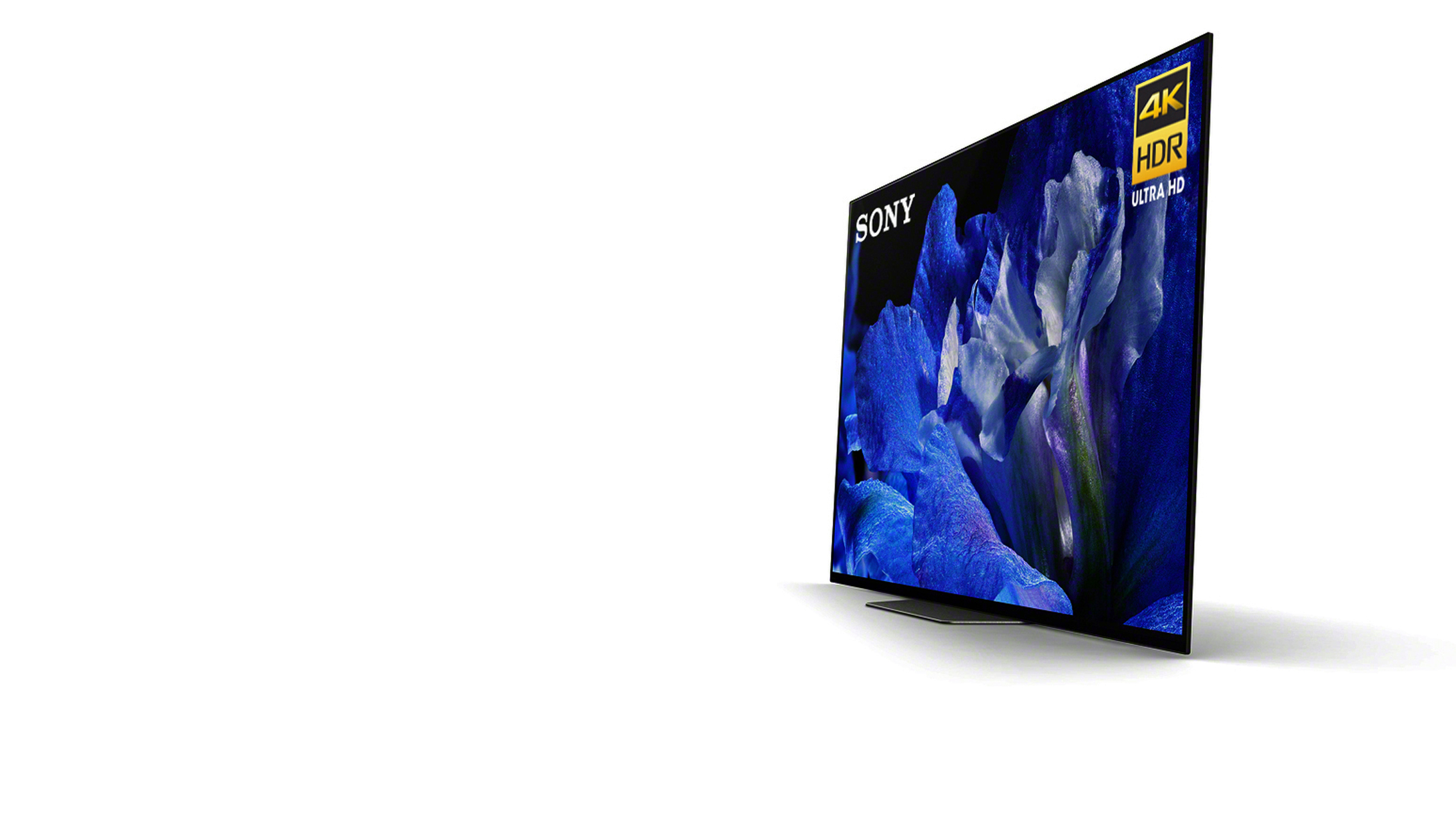
As you would expect, picture quality is jaw-droppingly good here. Sony has made an art form out of marrying panel and processing technologies, which the powerful AF8 optimises to near perfection. Much of this synergy is achieved during the manufacturing process. The same kind of pre-release calibration is done on its Trimaster Studio OLED monitors. As such, the TV looks great straight out of the box.
The AF8 shares the same flagship X1 Extreme image processor as its A1 predecessor, and there’s really not a great deal of on-screen difference. The A1 Extreme analyses the signal and the characteristics of the panel. This means it does a slightly different job on OLED as on LED LCD. Dynamic tone mapping for HDR is tailored to the TV’s ability to display brightness and colour. It’s extremely effective.
SDR and HDR video modes comprise Vivid, Standard, Custom, Cinema Pro, Cinema Home, Sports, Animation and Game.
HDR support covers HDR10, HLG and Dolby Vision. Although the latter doesn’t extend to external devices such as Blu-ray, unless they've had a specific, corresponding firmware update, you do get Dolby Vision from the set’s Netflix app. Perhaps we should dub this approach Dolby Vision lite?
The AF8’s HDR handling is excellent for an OLED screen. We measured a peak luminance at a high 900 nits using a five per cent window. Peak brightness diminishes if this highlight window is enlarged, though given that spectral highlights can be small and fleeting, this isn’t an issue. I really can't agree with certain reviewers who found the AF8's picture to be duller than the A1.
Black level performance is superb, with perfect inky blacks and copious shadow detail. What’s more, the Triluminos wide colour and vibrancy is stunning, and native 4K detail presentation is first rate. The forest battle in Transformers: Revenge Of The Fallen on UHD Blu-ray is a breathtaking example of just how fine 4K HDR10 can look on the AF8.
My recommended image presets are Standard, which has a good overall APL (average picture level) and Cinema Home mode for a convincing cinematic UHD presentation.
For the most consistent image performance, switch off the Light Sensor, or the image can ‘pump’ as it compensates for changes in ambient room lighting.
Sony AF8: sound performance
Here Sony is again using Acoustic Surface technology to deliver audio. That means there are no traditional stereo speakers on board, with the panel itself invisibly vibrating to deliver forward-facing audio. Stereo transducers are affixed to the rear of the panel, augmented by twin woofers that fill out the mid-range.
The result is a superb sonic performance. Stereo imaging is effective and direct, with clear panning around the image. The rear woofers work in tandem with the transducers and effectively act as one. Astonishingly, the AF8 can drop down to 31.5Hz – that’s serious subwoofer territory – but it’s at its most melodious in the mid-range.
The set also support Dolby Atmos audio, when it’s delivered in a Dolby Digital + container. This could be from the internal Netflix app, of delivered via Sky Q or BT TV.
Just to avoid any confusion: the TV's audio system doesn’t do anything with this, but you can output Atmos over HDMI ARC to a compatible soundbar or if you require a more serious home cinema effect, an AV receiver.
If the AF8 does have a weakness it’s in its gaming performance. In Standard preset, image lag is high at 101.5ms. Using Game mode this drops to 47.2ms, which is certainly an improvement, but still a bit tardy for high-precision FPS games. Ideally I look for 30ms or less for a satisfying TV gaming experience.
Sony KD65AF8 OLED: Features
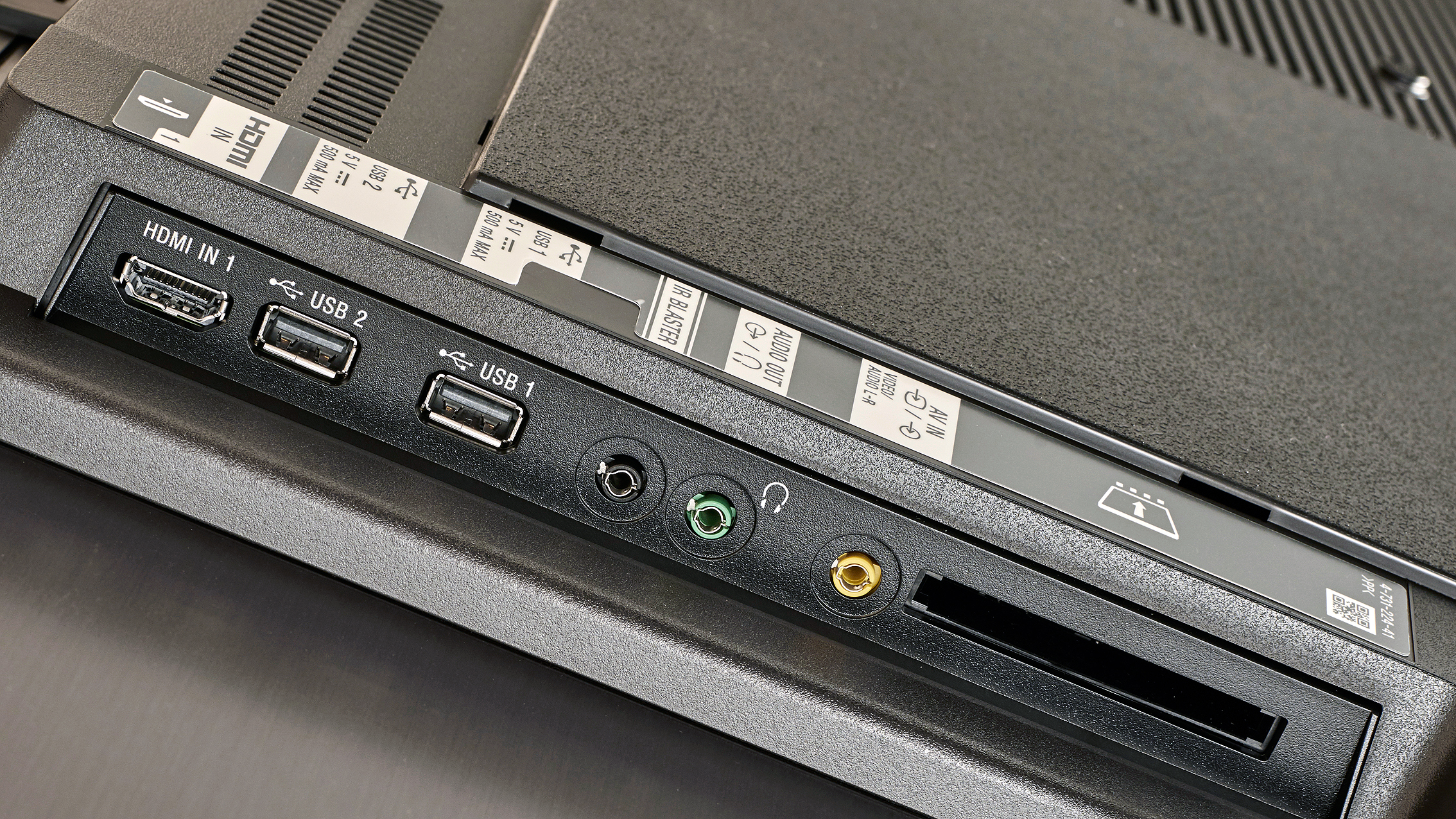
Rear connections include four HDCP 2.2 ready 4K HDMIs, although only two support full fat, 10-bit 4K. There are also three USBs (one designated for HDD recording), an AV minijack input, headphone out, optical digital audio output and ethernet to complement the onboard AC Wi-Fi. All these inputs are disguised behind snap-on panels, which gives the set a clean, uncluttered look. There’s a choice of either terrestrial or satellite tuners.
The remote control is the standard Sony soft-button doofer with integrated microphone and hot buttons for Netflix and Google Play.
While there’s no Freeview Play on the AF8, you do get a custom iteration of YouView that offers the same integrated catch-up TV services and roll-back programme guide.
In terms of streaming support, all the main TV players are covered, plus Netflix, Amazon Prime Video, Google Play, YouTube, DisneyLife, Rakuten TV and Spotify.
The Android TV OS 7.0 platform that handles all this is still a clunky user experience compared to what you find on Samsung, Sony and Panasonic TVs, but on the other hand it offers a considerable level of useful additional functionality, courtesy of integrated Chromecast and Google Assistant.
Sony AF8 4K HDR OLED TV: Verdict
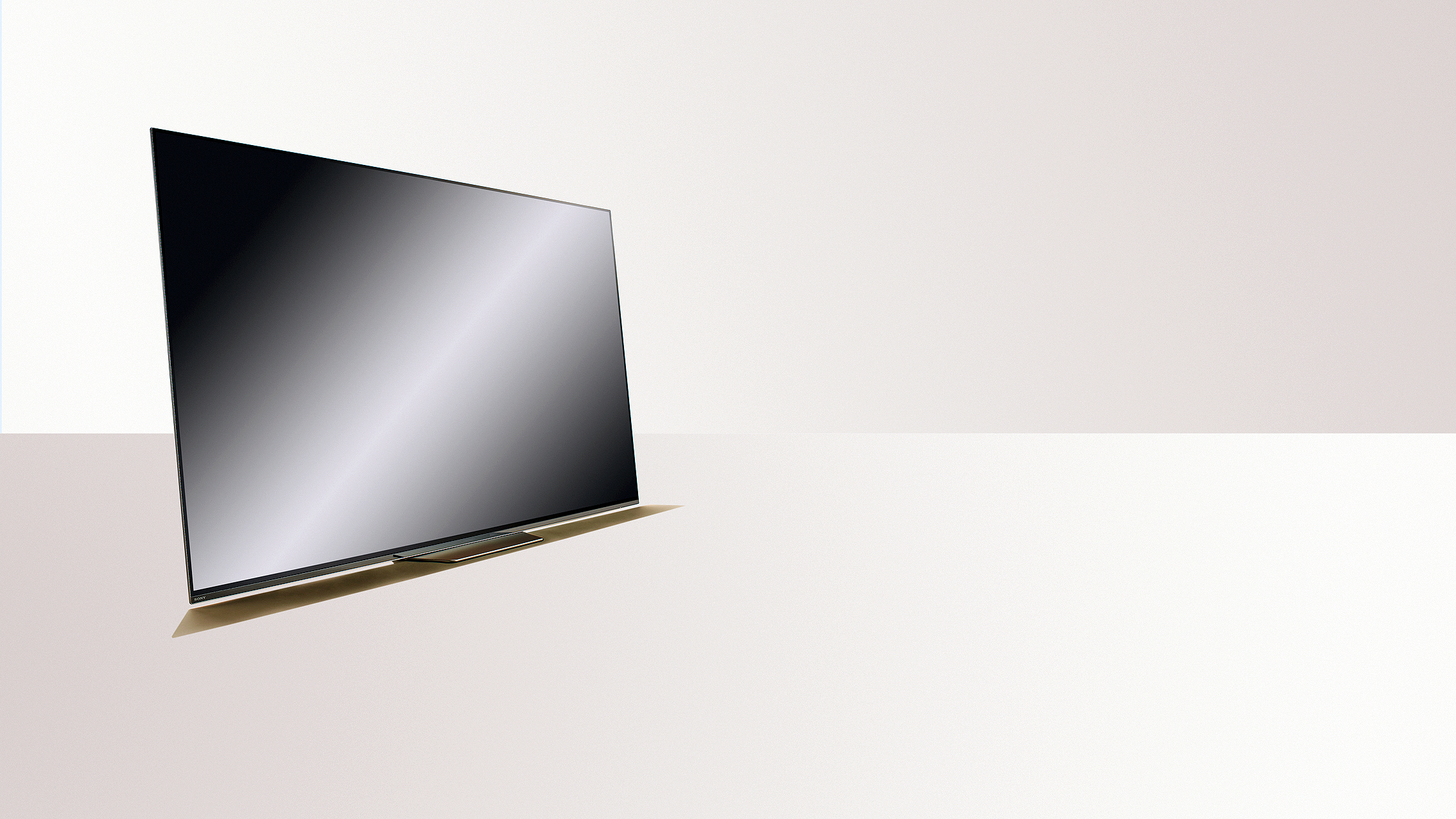
This is currently the best TV you can buy. To see one is to want an upgrade (unless you splashed out on an A1 last year), and the visuals and sound are simply stunning. The gaming mode is the only element that is less than awesome, in fact, although you can quibble over the relatively clunky Android smart TV platform, and the lack of any big leap forward from the A1.
However, before you rush out to the shops, I'm currently testing LG's OLED C8, which is priced in exactly the same ballpark as the AF8 at both 55- and 65-inch sizes.
So whether the KD65AF8 and KD55AF8 will remain the absolute best OLED HDR TVs you can buy for around £3,500 and £2,500 remains to be seen, particularly if you're a keen gamer. The bar for 2018 has been set very high, whatever the outcome.
- Best projector: 4K and Full HD projectors for sport and movies
- Best soundbars and sound bases to boost your TV's sound
Epilogue: Sony KD65AF8 vs LG OLED65C8 in a heavyweight OLED showdown…
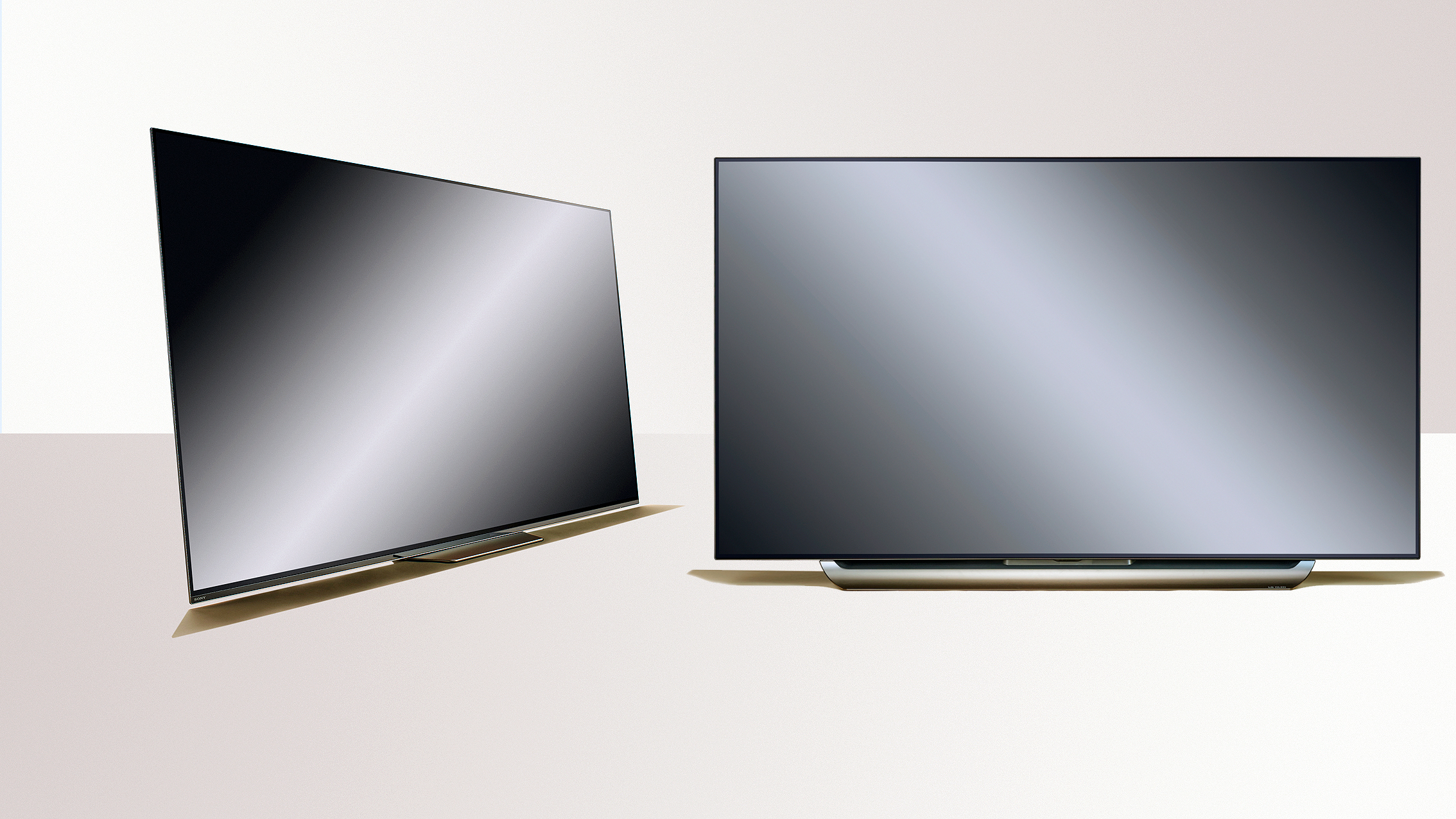
Sony AF8 on the left, LG C8 on the right
Most punters will want to know one thing: in a fist fight between the LG C8 and Sony AF8, who wins? For us, it's the Sony, on a points decision.
There's one market where the winner appears clearer: when it comes to gaming, the LG's lower image lag, and more dynamic HDR game preset make it a better choice, even if a lot of games actually look very similar in 'real life'.
When it comes to HDR handling, both support Dolby Vision, HLG and HDR10. The Sony boasts the best handling of SDR material, offering a more naturalistic HDR-style lift. The Sony also has notably superior motion handling.
However, LG’s HDR Vivid mode is drop dead gorgeous. The LG can also articulate UHD detail (in certain modes) better than the Sony.
LG’s ThinQ AI and webOS platform is clearly better than Sony's Android OS.
Sony's in-set audio is clearly better than LG's, although with both outputting Dolby Atmos, you may want to move the sound to an external source.
For design, build and aesthetics, Sony scores higher, and at this kind of price, that's important.
So in short, choosing a winner is not easy, but given that Sony's TV is narrowly better with HD and SDR 4K, there is currently more content to enjoy more on it. The World Cup is coming up, and Sony AF8's superior motion handling gives it a half-time lead over the LG when it comes to sport.
On the other hand, the LG is more awesome with 4K, HDR material, of which more will appear in future. Not to say that the Sony is bad, but the LG is that bit better, to these eyes.
Whatever. We’ll be debating the pros and cons of these two for months. With Panasonic and Philips' OLED flagships still to come, plus Samsung's QLED champions, 2018 will be a vintage year for high-end yet reasonably affordable TVs. The real winner then is you the consumer.
Sign up to the T3 newsletter for smarter living straight to your inbox
Get all the latest news, reviews, deals and buying guides on gorgeous tech, home and active products from the T3 experts
For over 25 years, Steve has been casting his keen eyes and ears over the best that the world of TV and audio has to offer. He was the creator of Home Cinema Choice magazine, and contributes to huge range of technology, home and music titles along with T3, including TechRadar, Louder, Ideal Home, the i newspaper, and more.
-
 This is the sound of BMW's upcoming Neue Klasse EVs
This is the sound of BMW's upcoming Neue Klasse EVsHas BMW cracked the problem of making EVs sound fun with its next-gen soundscape for its Neue Klasse cars
By Alistair Charlton Published
-
 Build unshakeable core strength with a kettlebell and these three exercises
Build unshakeable core strength with a kettlebell and these three exercisesAdd this to the end of your workout to fire up your midsection muscles
By Bryony Firth-Bernard Published
-
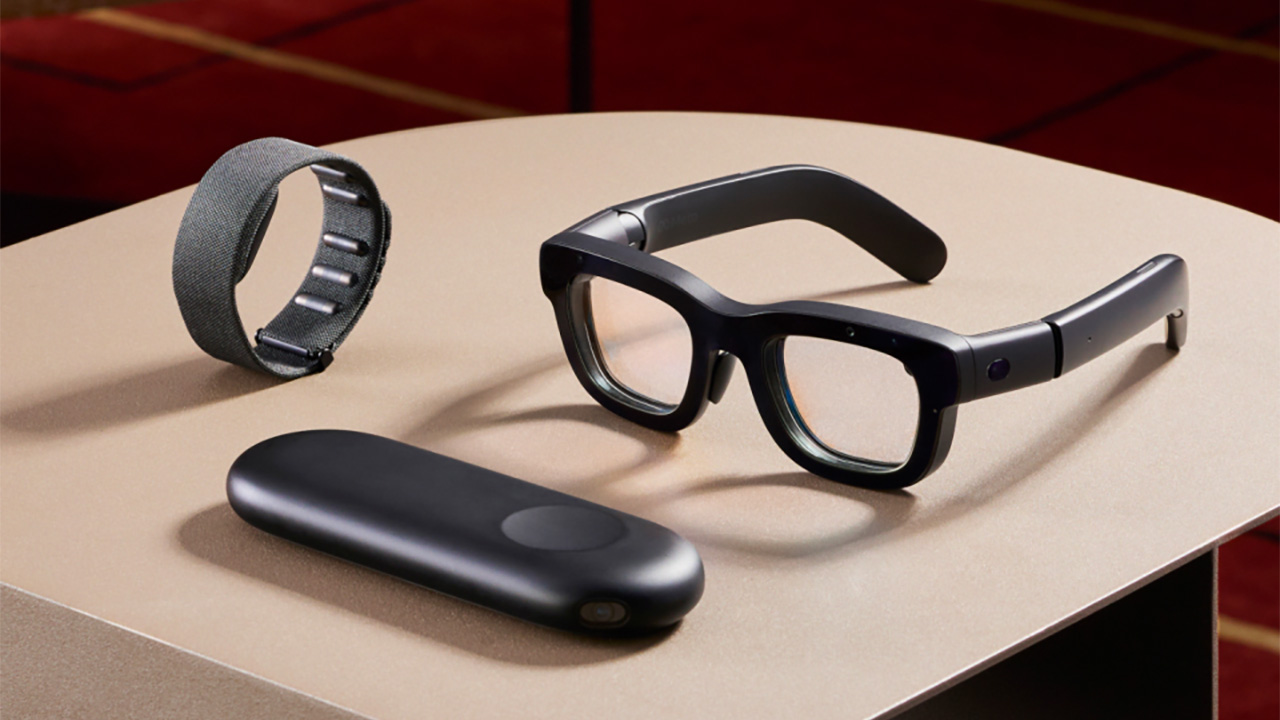 The next big tech battlefield is AR Glasses – and Apple is ready to fight
The next big tech battlefield is AR Glasses – and Apple is ready to fightTim Cook is said to "care about nothing else"
By Sam Cross Published
